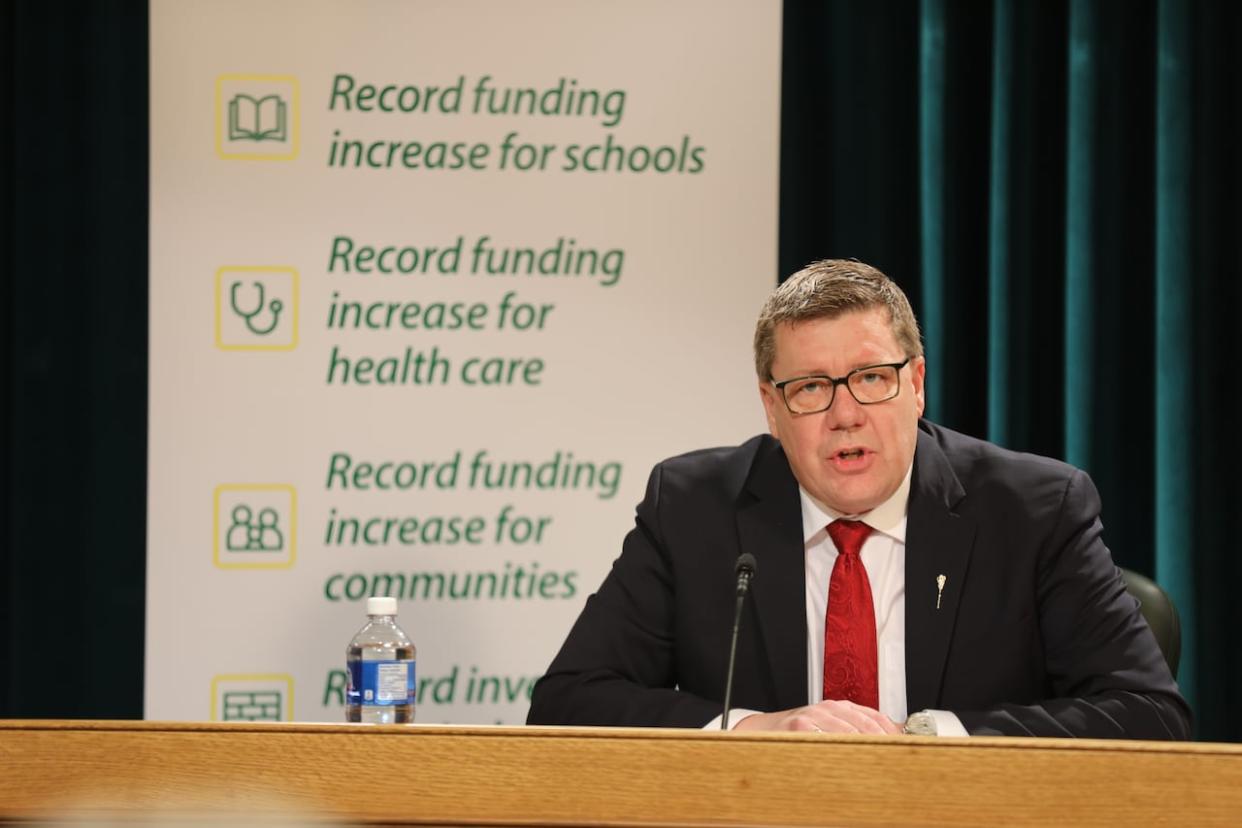Sask. 'boring' budget provides few surprises, analyst says

- Oops!Something went wrong.Please try again later.
The Saskatchewan Party's election-year budget brought few surprises, plenty of spending and minimal reaction from analysts and stakeholders.
Donna Harpauer released her last budget as finance minister on Wednesday. It included a $273.2-million projected deficit and touted "record" spending in numerous areas, but had no tax cuts.
Harpauer said she would have "loved" to balance the budget and reduce taxes, but that was not possible.
Instead, the government spent on capital projects like schools, hospitals, roads and Crown infrastructure.
While much of the spending plans were telegraphed or outright announced pre-budget, one political analyst said he was not expecting a deficit.
"I was really surprised by it, to be honest. I never thought I'd see the Saskatchewan Party government have a deficit planned in an election year," said Jim Farney, Regina director of the Johnson-Shoyama School of Public Policy. "That's exactly what they've done. They've got record spending, record infrastructure investment and the result is a small deficit projection."
The deficit was the only real surprise, Farney said. He referenced former Ontario premier Bill Davis.
"Davis would always say boring works. This government usually does not have surprises in its budget. It's been [like that] for a long time. Surprises happen in the economy and they react, but I would be surprised to see them have some big shiny things front and centre. They're moving a whole bunch of levers and have gotten quite adept at that."
Watch a replay of CBC's live coverage from budget day here:
Both Harpauer and Moe talked up the government's "record" spending in several ministries and on big construction projects.
"What's fascinating is they have made a bunch of decisions about spending on a wide swath of programs. You can argue about whether or not that investment is enough, but they are making this choice by increasing spending on the program side," Farney said.
The Opposition NDP criticized the spending choices, saying there should have been cost-of-living relief through a reduction of the provincial gas tax.
"I'm sometimes surprised watching the NDP argue for tax cuts as the solution to affordability. We're in kind of an odd space. We've got a big spending right-wing government and a tax-cutting NDP. But I think it resonates with people," Farney said.
"What I will watch as they debate the budget over the next few weeks and then move into election mode is what's the balance between those things and how do the two plans line up? I think we all know you can't both spend more on services and necessarily cut taxes."
In-year challenges affecting the bottom line
Farney said the government made "fairly conservative assumptions" in the budget when it comes to natural resource revenues.
Potash has seen the most significant decrease in price over the past couple of years, following a huge spike at the outset of the war in Ukraine. From January 2023 to January 2024, potash sales dropped by 17 per cent in Saskatchewan.
In 2022-23 potash prices were $562 US/KCI tonne, in the 2024-25 budget they are forecast at $268.
Overall non-renewable resource revenue is projected to be down to $2.6 billion from $3.3 billion in last year's budget. Non-renewable resources account for 13.5 per cent of the overall revenue in this upcoming budget. This is lower than taxes ($9.7 billion), federal transfers ($3.7 billion) and other revenue sources ($3.0 billion).
Reacting to volatile resource prices, drought and wildfires has resulted in misses on budget projections in recent years, as has in-year spending on education and health care.
The government touted a record $1-billion projected surplus last March in the 2023-24 budget. But as the dust settled, that has turned into a projected $482 million deficit.
In November, Harpauer revealed a mid-year update showing the billion-dollar surplus had devolved into a $250-million deficit.
"Two large factors outside of the government's control play into this forecast. The drought was unforeseen, reducing projected crop production by 20 per cent in 2023, when compared to 2022," Harpauer said at the time.
She said potash prices, and sales dropping due to potash from Russia and Belarus flowing back into China and India, also played a role.
A month before the budget, the government spent $757 million through special warrants. More than half ($450 million) went to health care — split between the Saskatchewan Health Authority, Saskatchewan Cancer Agency and for physicians' services as part of a new contract agreement with doctors.
"I think that is a clear political decision they've made, that maybe it is more important to invest in public services than it is to emphasize a balanced budget over everything else," Farney said.
Listen | Morning Edition host Stefani Langenegger speaks to Sask. Finance Minister Donna Harpauer:
Unlike last year's budget, the government is not retiring any debt. Last March, the government said it would pay down up to $1 billion in operating debt "reducing interest costs and investing those savings into needed services, programs, and capital," Harpauer said in March 2023.
Debt is projected to rise by $3 billion by the end of 2025 to an overall gross total of $34 billion.
When asked about that, Moe pointed to spending on capital projects.
"We are putting cash and using debt to continue to build schools, 11 new schools this year. It's the capital plan that continues to put pressure on the budget."
Financing that debt will now cost $911.5 million, up nearly $100 million from last year's budget. At this pace, debt financing could reach $1 billion by 2025-26.

